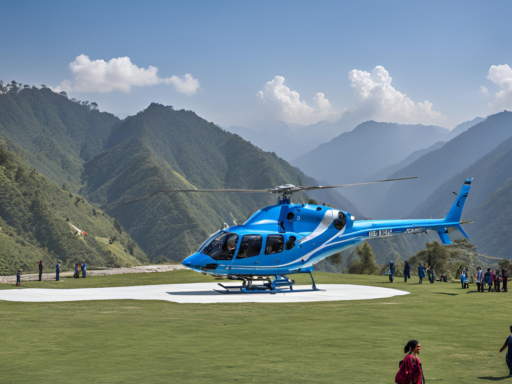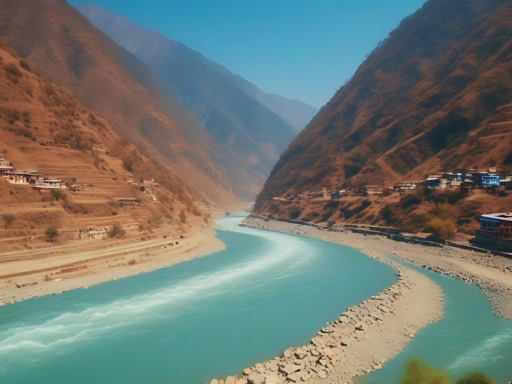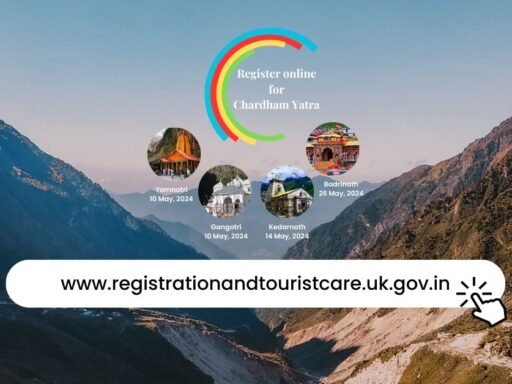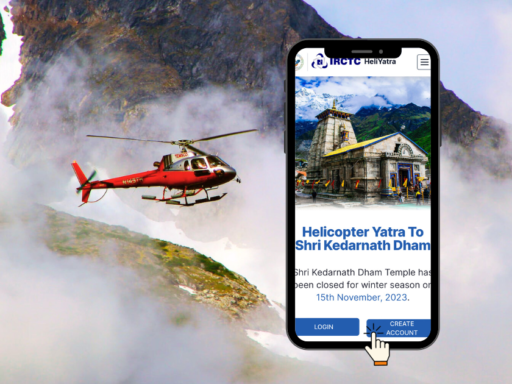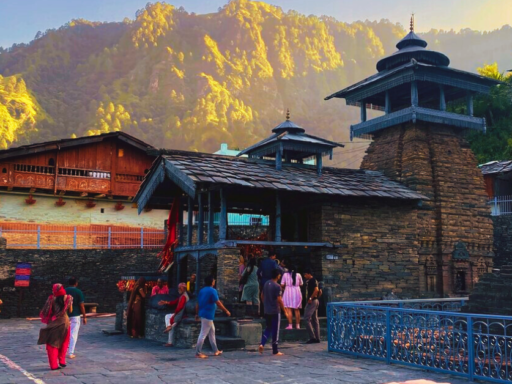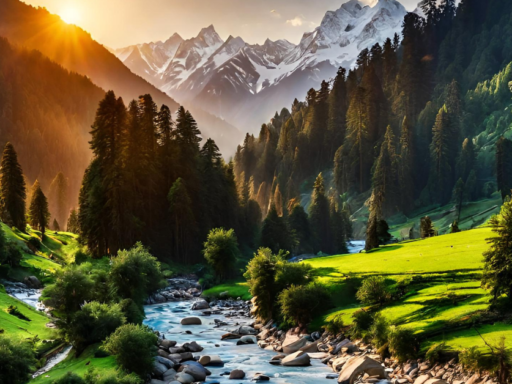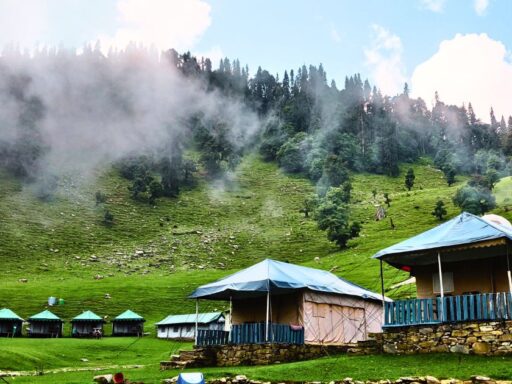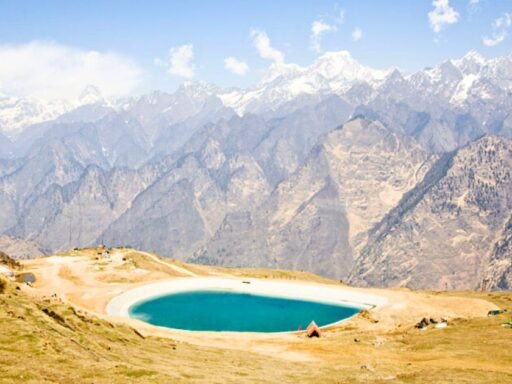Badrinath Temple, also called Badrinarayan Temple, is dedicated to Lord Vishnu. Situated at about 3,100 meters in the Garhwal Himalayas, it stands along the Alaknanda River, nestled between the Nar and Narayana mountain ranges. Established by sage Adi Shankaracharya in the 8th century, the temple opens for six months annually, with Lord Vishnu as its presiding deity.
Table of Contents

History & Architect of Badrinath Temple
According to Hindu legend, Lord Vishnu meditated at the present-day site of Badrinath. Unaware of the cold, Vishnu was protected by his consort, Lakshmi, who took the form of a Badri tree (jujube). Pleased by her devotion, Vishnu named the place Badrika Ashrama. Historically, the area was believed to be a jujube forest, though none remain today. In the Badrinath Temple, Vishnu is depicted in the padmasana posture, symbolizing his long meditation at the site.
Another version of the legend comes from the Vishnu Purana, where Nara and Narayana, sons of Yama, chose the site for their hermitage while spreading their religion. They explored other nearby sacred locations, known as the Pancha Badri—Adibadri, Bridha Badri, Yoga-Dhyana Badri, and Bhavisha Badri—before settling on the hot and cold springs near the Alaknanda River. They named the site “Badri Vishala.”
Architect of Badrinath Temple
Adi Shankara established Badrinath as a pilgrimage site in the 9th century. The temple consists of three main structures: the Garbhagriha (sanctum), Darshan Mandapa (worship hall), and Sabha Mandapa (convention hall). The sanctum’s roof is conical and covered with a gold-gilded cupola.
Inside the temple, the main deity, Badrinarayana, is a 1-foot Shaligram (black stone) idol. The deity is depicted holding a conch (Shankha) and a wheel (Chakra) in two raised arms, while the other two rest in a Yogamudra posture. The temple also houses images of Kubera, Narada, Uddhava, and Nara-Narayana, along with 15 other deities, including Lakshmi and Garuda.
Just below the temple are the Tapt Kund hot springs, believed to have medicinal properties. Pilgrims bathe in these 55°C springs before entering the temple. Nearby are the Narad Kund and Surya Kund water ponds.
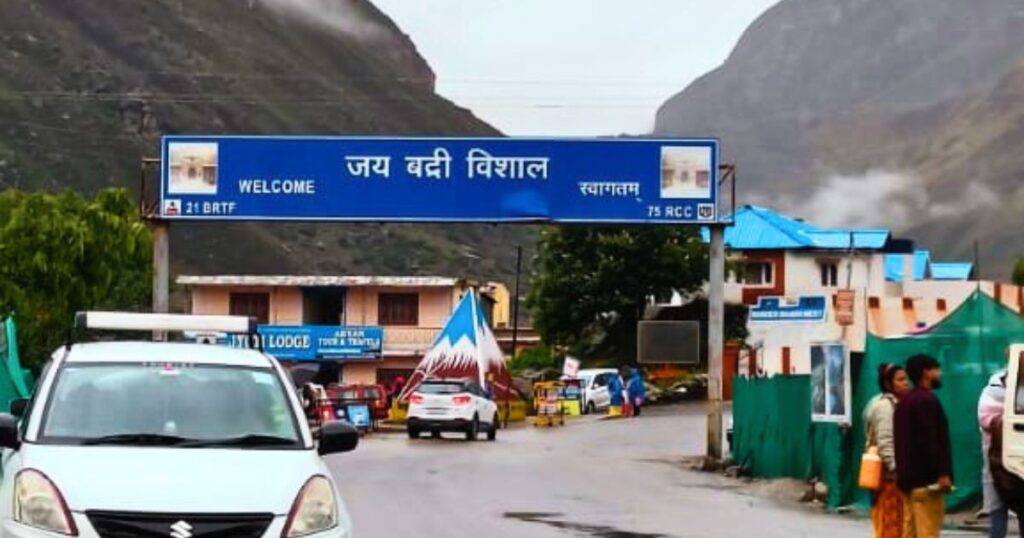
Location of Badrinath Temple
Badrinath Temple is situated in the Garhwal hills along the banks of the Alaknanda River in Uttarakhand’s Chamoli district, at an elevation of 3,133 meters (10,279 feet). It faces Nar Parbat, with Narayana Parbat behind it. The nearest airport from Badrinath Temple is Dehradun Airport (300 Kms away) and the closest railway station is Rishikesh railway station (300 Kms). Char Dham Yatra Route Map With Distance
- Nearest Airport – Jolly Grant Airport – Dehradun (300+ Kms)
- Nearest Railway Station – Rishikesh Railway Station (300+ Kms)
Delhi to Badrinath Route Map
Delhi to Badrinath route via NH 334 and NH 7 covers approximately 530 km, passing through key cities like Ghaziabad, Meerut, Roorkee, Haridwar, Rishikesh, and Srinagar. Major toll plazas include Dasna Toll and Muzaffarnagar Toll on NH 334.
- Delhi to Meerut – 70 km (via NH 334)
Meerut to Muzaffarnagar – 65 km
Muzaffarnagar to Roorkee – 55 km
Roorkee to Haridwar – 30 km
Haridwar to Rishikesh – 20 km
Rishikesh to Devprayag – 75 km
Devprayag to Srinagar – 35 km
Srinagar to Rudraprayag – 35 km
Rudraprayag to Joshimath – 115 km
Joshimath to Badrinath – 45 km
Dehradun to Badrinath Route Map
The route from Dehradun to Badrinath covers approximately 330 km, passing through towns like Rishikesh, Devprayag, Srinagar, Rudraprayag, and Joshimath. The route primarily follows NH 7 (previously NH 58).
- Dehradun to Rishikesh – 45 km (via NH 7)
- Rishikesh to Devprayag – 75 km
- Devprayag to Srinagar – 35 km
- Srinagar to Rudraprayag – 35 km
- Rudraprayag to Joshimath – 115 km
- Joshimath to Badrinath – 45 km
Haridwar to Badrinath Route Map
The route from haridwar to Badrinath covers approximately 300 km, passing through towns like Rishikesh, Devprayag, Srinagar, Rudraprayag, and Joshimath. The route primarily follows NH 7 (previously NH 58).
- Haridwar to Rishikesh – 20 km (via NH 7)
- Rishikesh to Devprayag – 75 km
- Devprayag to Srinagar – 35 km
- Srinagar to Rudraprayag – 35 km
- Rudraprayag to Joshimath – 115 km
- Joshimath to Badrinath – 45 km
Rishikesh to Badrinath Route Map
The route from Rishikesh to Badrinath covers approximately 290 km, passing through towns like Devprayag, Srinagar, Rudraprayag, and Joshimath. The route primarily follows NH 7 (previously NH 58).
- Rishikesh to Devprayag – 75 km (via NH 7)
- Devprayag to Srinagar – 35 km
- Srinagar to Rudraprayag – 35 km
- Rudraprayag to Joshimath – 115 km
- Joshimath to Badrinath – 45 km
Weather in Badrinath
Badrinath, at 10,000+ ft height experiences different temperature ranges across seasons. In summer (May-June), temperatures vary from 7°C to 18°C. During the monsoon season (July-September), temperatures are between 5°C and 15°C, with frequent rainfall. In winter (October-April), temperatures drop significantly, ranging from -1°C to -15°C, and the area is often covered in snow.
The temple remains closed during winter due to harsh weather conditions. Travelers usually visit in summer when conditions are more stable. Weather Conditions at Char Dham Yatra
Monthly Weather Conditions at Badrinath Temple
May:
In May, Badrinath experiences mild temperatures ranging from 7°C to 18°C. The pilgrimage season usually begins and travel conditions are generally favorable with clear roads.
June:
June brings slightly cooler temperatures between 5°C and 16°C. While the weather remains suitable for travel, occasional pre-monsoon showers may occur.
July:
By July, temperatures range from 5°C to 15°C, and the monsoon sets in. Heavy rains increase the risk of landslides, though the temple remains open.
August:
In August, temperatures stays between 5°C and 14°C. Persistent rainfall continues, making travel more challenging and hazardous on mountain roads.
September:
September sees temperatures from 5°C to 15°C as monsoon activity begins to decrease. Road conditions improve later in the month for smoother transfers.
October:
October brings cooler weather with temperatures dropping from 5°C to 15°C. Snowfall begins occasionally, best time to travel as autumn arrives.
Which is Colder, Badrinath or Kedarnath?
Kedarnath is generally colder than Badrinath due to its higher elevation of 3,583 meters (11,755 feet), compared to Badrinath’s 3,300 meters (10,827 feet). Both locations experience freezing temperatures, especially during the winter months, but Kedarnath tends to be more severe.

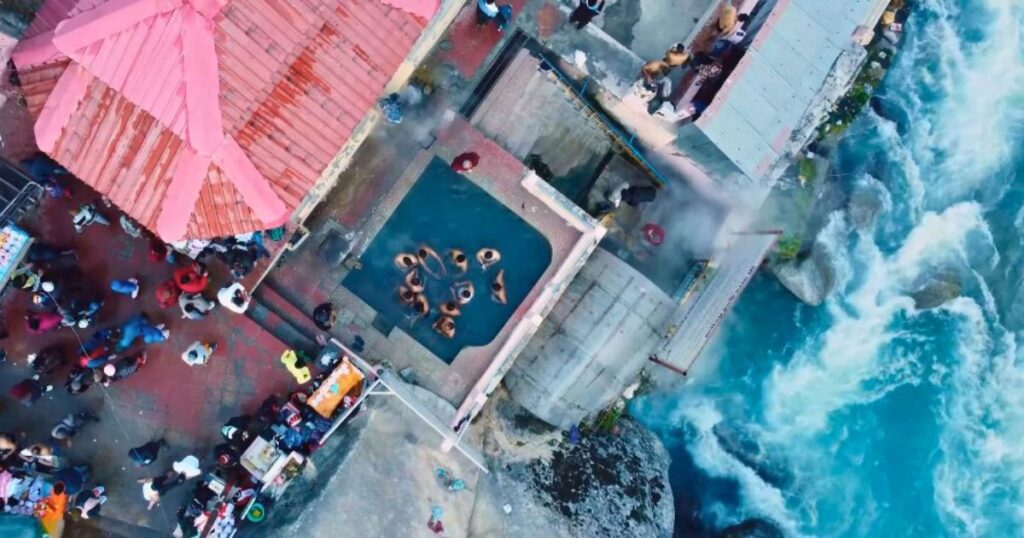
What is the best time to visit Badrinath Temple?
The best time to visit Badrinath Temple is from April to June and September to November. During these months, you’ll experience mild and pleasant weather making it easily accessible for both pilgrims and tourists to explore this sacred site.
Summer (May to June): Ideal time to visit Badrinath, temperature ranging from 10°C to 20°C. The weather is very pleasant, making the journey and stay more comfortable.
Monsoon (July to September): Not Recommended to visit, this season brings the risk of heavy rainfall and landslides in the mountainous region.
Post-Monsoon (October to November): The temperatures start to drop, but the overall weather remains favorable for travel. It’s a good time to witness the autumn colors in the surrounding landscapes.

Badrinath Temple Opening Date 2025
On May 4, the portals of Badrinath Dham will open for devotees at 6 AM, as announced on Basant Panchami at the Narendra Nagar royal palace in Tehri. A spokesperson confirmed the date, marking the start of preparations for the pilgrimage season.
| Temple Name | Opening Date, Day & Time |
| Badrinath Temple | 4 May, Wednesday – 06:00 AM |
Badrinath Temple Timings
Badrinath Temple timings for 2024 starts from 6AM – 12PM followed by evening darshan from 4PM-9PM.
| Monday | 06 AM – 12 PM | 04 PM – 09 PM |
| Tuesday | 06 AM – 12 PM | 04 PM – 09 PM |
| Wednesday | 06 AM – 12 PM | 04 PM – 09 PM |
| Thursday | 06 AM – 12 PM | 04 PM – 09 PM |
| Friday | 06 AM – 12 PM | 04 PM – 09 PM |
| Saturday | 06 AM – 12 PM | 04 PM – 09 PM |
| Sunday | 06 AM – 12 PM | 04 PM – 09 PM |

How To Reach Badrinath Temple
Badrinath Temple can be reached by car or bus from major nearby cities like Rishikesh and Haridwar. The nearest airport is Jolly Grant Airport in Dehradun, and the nearest railway station is in Haridwar. From these points, road transport is the most common method of reaching Badrinath.
Badrinath Temple by Road
- Delhi to Badrinath by road – 525 Kms (16 Hours drive)
- Haridwar to Badrinath by road – 300 Kms (12 Hours drive)
- Rishikesh to Badrinath by road – 280 Kms (12 Hours drive)
- Dehradun to Badrinath by road – 320 Kms (12 Hours drive)
Badrinath Temple by Air
Jolly Grant Airport Dehradun is the nearest airport from Badrinath Temple, one can find Non Stop flights from Hyderabad, Bangalore, Mumbai, Ahmedabad, New Delhi.

Train Route to Badrinath Temple
Badrinath does not have its own railway station, but travelers can take a train to nearby stations such as Rishikesh, Haridwar or Dehradun. Haridwar is the most popular choice due to its extensive connectivity and the availability of express trains. It serves as a convenient hub for those traveling onward to Badrinath.
| Train No. | FROM | TO | TIMING | RUNS ON | TOTAL TIME |
| 12369 Kumbh Express | Howrah Jn. | Haridwar | 01:00 PM | M/W/T/S/S | 26 Hours |
| 19019 BDTS HW Express | Surat | Haridwar | 04:30 PM | All Days | 27 hours |
| 12171 LTT HW AC Express | LokmanyaTilak Terminal | Haridwar | 07:55 PM | M/TUE | 28 Hours |
| 19031 Yoga Express | Ahmedabad Jn. | Haridwar | 10:50 AM | All Days | 24:30 Hours |
| 12401 Kota DDN Express | Hazrat Nizamuddin | Haridwar | 23:50 PM | All Days | 4 Hours |
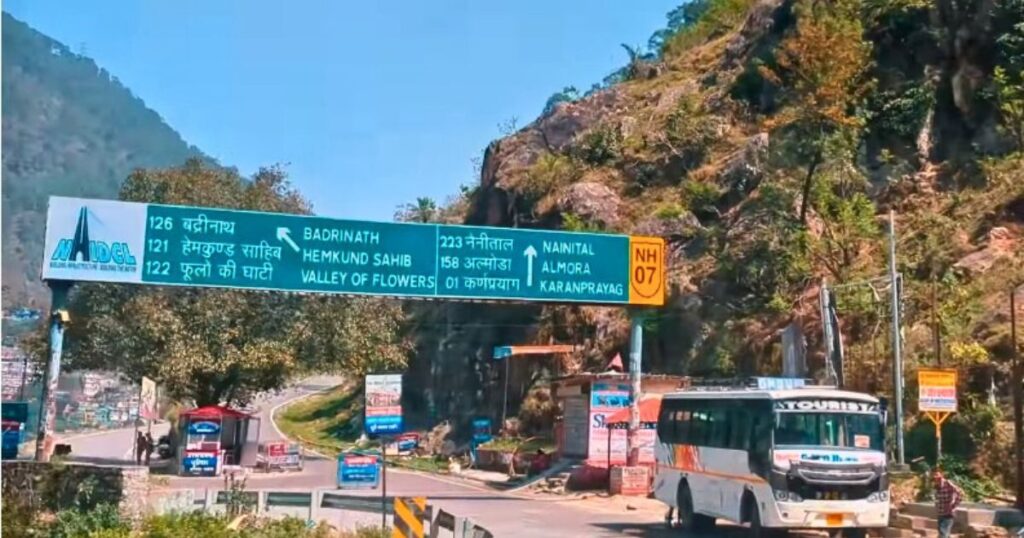
Is Badrinath Yatra difficult ?
Badrinath Temple, at 3,133 meters, offers easy access with no trek, welcoming all ages. Weather ranges from 2°C to 14°C (May & June) and 0°C to 12°C (Sept & Oct). Plan ahead, consult your doctor. Approx. travel: 315 km from New Delhi (around 10 hours) and 315 km from Haridwar (around 9 hours).
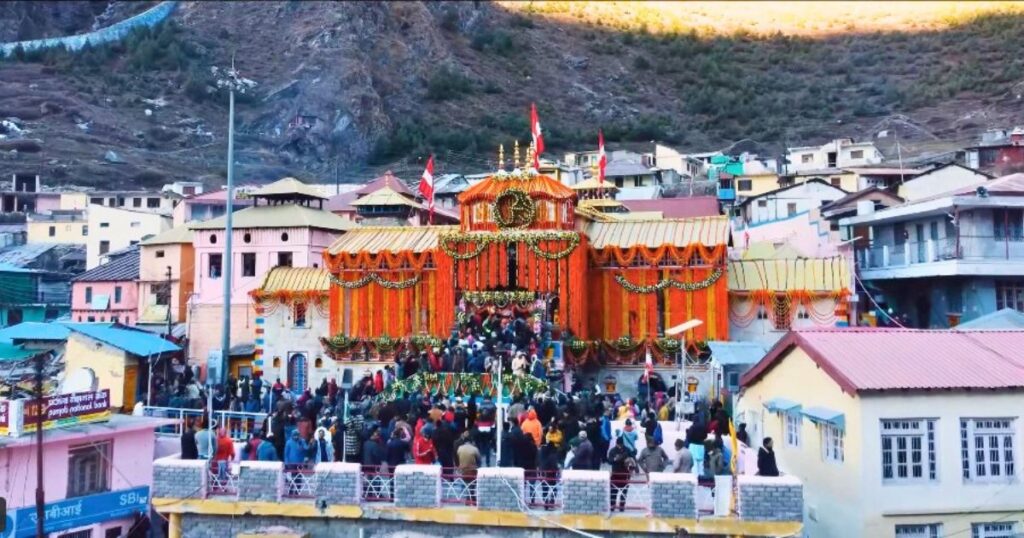
What are the facilities available in Badrinath Temple?
Badrinath offers a range of accommodation options, including hotels, guesthouses, ashrams, and dharamshalas, to ensure a comfortable pilgrimage experience. It’s wise to book in advance, especially during peak season. Basic facilities like clean drinking water, restrooms, and medical aid are available at the temple. Pilgrims can find shops and eateries for essentials, snacks, and souvenirs. Nearby areas like Mana Village and Joshimath also provide convenient access to the temple. Facilities at Char Dham Highway
Places to See Near Badrinath Temple
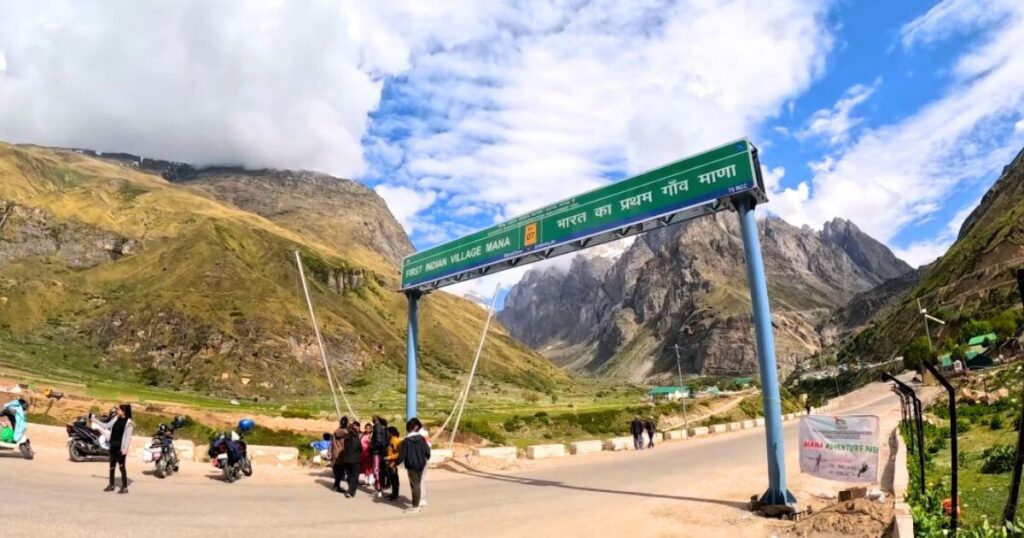
Mana Village
Located just 4 Km from Badrinath, Mana is the first Indian village on the Indo-Tibetan border, known for its cultural and scenic significance.
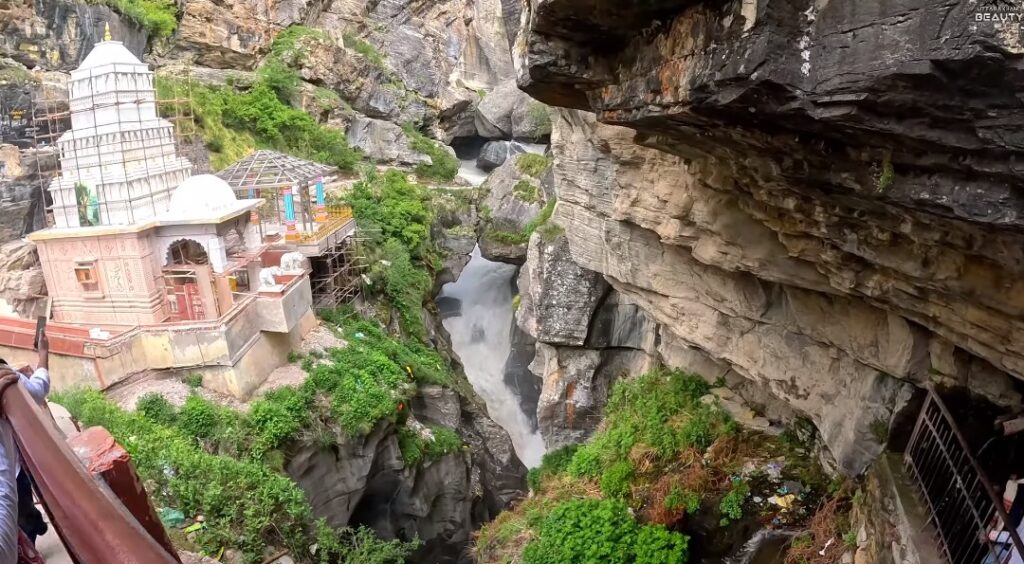
Saraswati River
People believe that the Saraswati River, a special and sacred river in ancient stories, starts from there. Even though we can’t see the river now, it’s important in our stories as a symbol of knowledge.
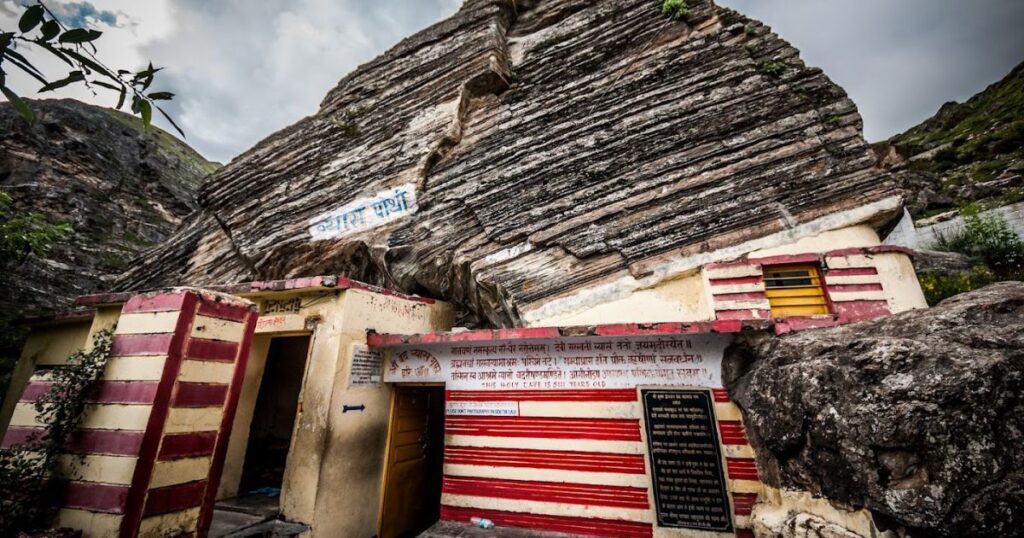
Vyas Gufa
Vyas Gufa is a special cave in Mana Village. Long ago, Sage Vyas, who wrote many old stories, meditated there. It’s a quiet place where people can feel the calmness and learn about our ancient tales.
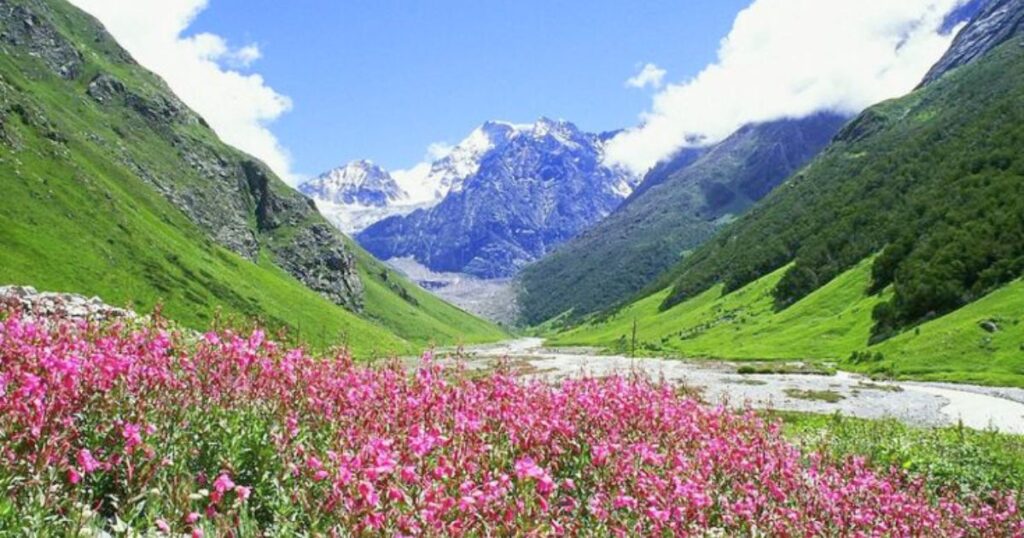
Valley Of Flowers
The Valley of Flowers is famous for its stunning natural beauty and diverse collection of vibrant flowers. Situated in the Himalayas in Uttarakhand, India, it is a UNESCO World Heritage Site known for its rich biodiversity and breathtaking landscapes.
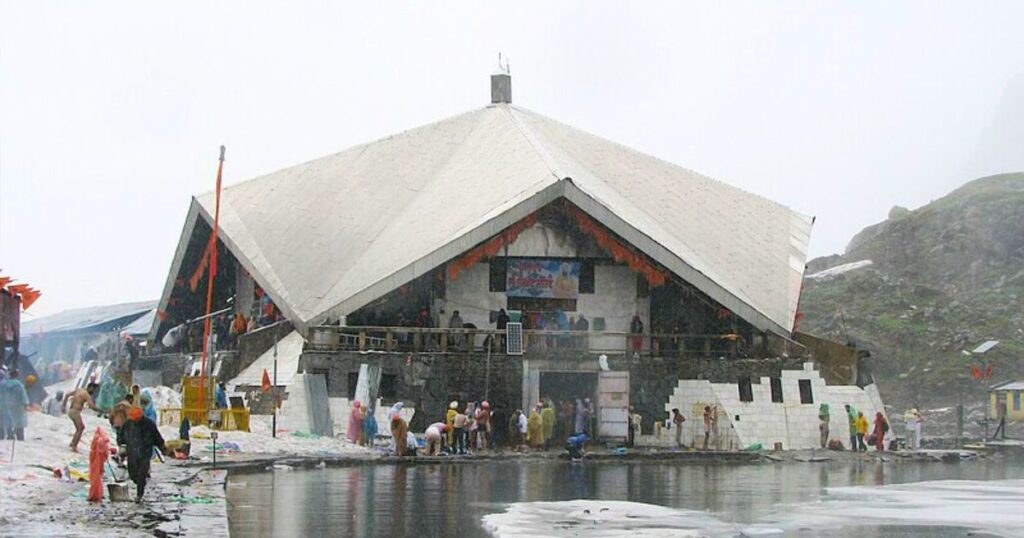
Hemkund Sahib
Hemkund Sahib is famous for its serene and sacred surroundings. It’s a Sikh pilgrimage site with a beautiful lake, surrounded by snowy mountains. People visit Hemkund Sahib for its religious importance and breathtaking views.
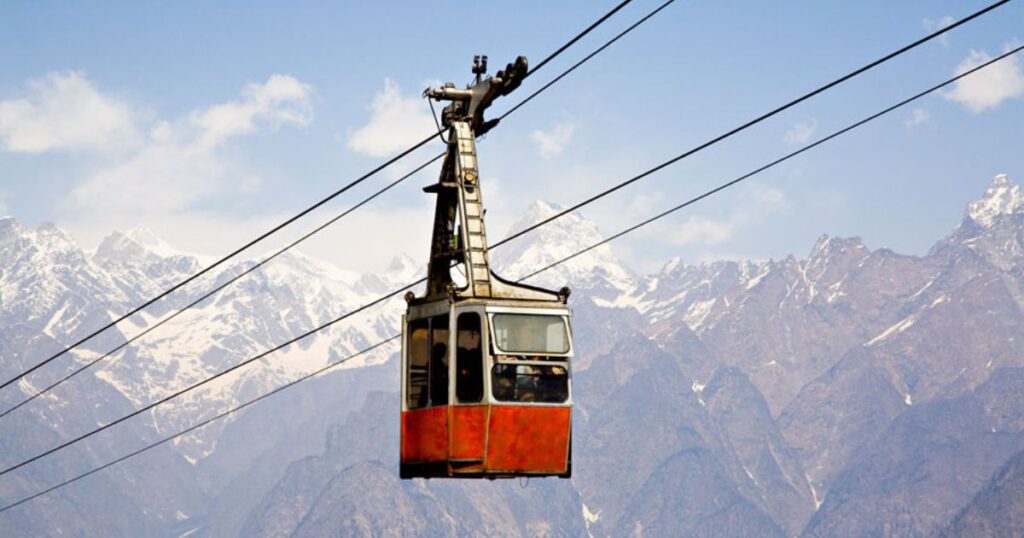
Auli, Joshimath
Auli as a destination is particularly known for its excellent skiing facilities, making it a popular winter sports destination. Auli’s charm lies in its natural beauty, making it a sought-after destination for both adventure enthusiasts and those seeking a peaceful mountain retreat.
Planning and Preparation Tips for Badrinath Temple
Plan during May-Nov for favorable weather. Book accommodations early due to peak seasons, and pack appropriately for the mountainous terrain, considering the high altitude. Here are 4 important things to keep in mind before visiting Badrinath.

- Weather and Season Considerations
- Visit during the months of May to June and September to October, when the weather is pleasant and favorable for travel.
- It is advisable to carry suitable clothing in layers to accommodate changing weather. Additionally, rain gear and sunscreen are essential.
- Health and Safety Measures
- Badrinath Temple is situated at a high altitude, and it is important to be physically fit and acclimatize to avoid altitude sickness.
- Prioritize regular exercise, maintain a healthy diet, and consult with a healthcare professional if you have any existing medical conditions.
- Carry necessary medications, especially for altitude sickness, headaches, and common ailments.
- A basic first aid kit including band-aids, antiseptic lotion, and pain relievers is recommended.
- Travel Documents and Permits
- Carry identification documents such as government-issued ID, passport, or Aadhar card.
- If you are a foreign national, it is advisable to carry your passport and check the visa requirements beforehand.
- Special permissions may be required in certain cases, such as photography or videography permits. Check with the local authorities for specific requirements.
- Stay and Transportation Arrangements
- Due to the high influx of pilgrims, it is advisable to book accommodation in advance.
- Several online platforms and travel agencies provide options for booking accommodation as per your preferences and budget.
- Badrinath has a well-connected local transportation system, including buses and taxis, for ease of travel within the region.
Book from a Top-Rated Travel Company in Uttarakhand
Uttarakhand Trips (A Unit of SDR Travel Vaidya)
Frequently Asked Questions (FAQs)
Is oxygen less in Badrinath?
Oxygen levels in Badrinath are relatively lower because of its high-altitude location at 3,300 meters (10,827 feet). People sensitive to high altitudes may experience breathlessness and fatigue. It is recommended to consult your family doctor before planning.
Is Badrinath safe for heart patients?
Badrinath’s high altitude can be tough for heart patients due to lower oxygen levels. Those with heart issues should consult their doctor before traveling, as the combination of travel and altitude may worsen heart problems.
What is the altitude of Badrinath?
Badrinath is situated at an altitude of 3,300 meters (10,827 feet) above sea level in the Garhwal Himalayas. This high elevation contributes to its cold climate and thinner air, which can affect travelers not accustomed to high-altitude conditions.
Can asthma patients go to Badrinath?
Asthma patients can visit Badrinath but should take precautions due to its high altitude and thin air. Carrying necessary medications and consulting a doctor before the trip is strongly advised.
Which is colder, Badrinath or Kedarnath?
Kedarnath is generally colder than Badrinath due to its higher elevation of 3,583 meters (11,755 feet), compared to Badrinath’s 3,300 meters (10,827 feet). Both locations experience freezing temperatures, especially during the winter months, but Kedarnath tends to be more severe.
In which month can we visit Badrinath?
The best time to visit Badrinath is from May to October when the temple is open, and the weather is relatively pleasant. The monsoon season, from July to September, should be avoided due to the risk of landslides. May and June are ideal for a comfortable pilgrimage.
Is there snowfall in Badrinath?
Yes, Badrinath experiences heavy snowfall during the winter months from November to April. The temple remains closed to the public during this period, and the region becomes inaccessible due to snow-covered roads.
Is it difficult to reach Badrinath?
Badrinath is 300+ Kms long drive through mountainous roads. The terrain is challenging, especially during the monsoon season when landslides are common. While the route is generally safe during the open season, it is advised to travel carefully and avoid the rainy months.
Is Badrinath higher than Kedarnath?
No, Badrinath is at a lower altitude (3,300 meters or 10,827 feet) than Kedarnath, which is situated at 3,583 meters (11,755 feet). While both are high-altitude destinations, Kedarnath’s elevation makes it colder and slightly more challenging to reach.
Should I go to Badrinath first or Kedarnath?
Traditionally, pilgrims visit Kedarnath first, followed by Badrinath, as part of the Char Dham Yatra. The route typically begins in Kedarnath, then proceeds to Badrinath, which is considered the concluding stop of the pilgrimage.
Which month is Badrinath closed?
Badrinath closes in November, shortly after Diwali, and reopens in April or May. The exact closing date varies each year, but it is generally around mid-November when snowfall begins.
Badrinath temperature in May
In May, the temperature in Badrinath ranges from 5°C to 18°C. The weather is cool and pleasant during the day, while nights can be cold. It is one of the best months to visit, as the roads are clear, and the temple is open for pilgrims.
Is there snow in Badrinath in May?
In May, there is usually no fresh snowfall in Badrinath, but some snow may still be visible on surrounding peaks from the winter season. The roads are generally clear for travel, making it a favorable time for visiting.
Which month is best for Badrinath?
The ideal months to visit Badrinath are May and June when the weather is mild, and the roads are open without the risk of monsoon landslides. September to October is also a good time, with fewer crowds and cooler weather.
Is going to Badrinath safe?
Traveling to Badrinath is generally safe during the open season, from May to October. However, road conditions can become dangerous during the monsoon months due to landslides. It is recommended to avoid travel during heavy rains.
Can old age people go to Badrinath?
Yes, elderly people can visit Badrinath, but they should take precautions, especially if they have health conditions. Due to the high altitude and cold temperatures, it’s advised to consult a doctor beforehand and travel with necessary medical support.
Can heart patients go to Badrinath?
Heart patients can visit Badrinath but should be cautious due to the high altitude, which may cause difficulty in breathing and exert extra strain on the heart. Consulting a physician and ensuring necessary precautions are critical for a safe trip.
Is there walking in Badrinath?
There is minimal walking involved at Badrinath, with most of the temple and nearby areas accessible by road. However, the temple itself requires a short walk from the parking area, which may involve climbing a few steps.
How long is the walk to Badrinath?
The walk to Badrinath Temple from the parking area is around 200 to 300 meters. While the distance is short, the slight incline and high altitude may cause breathlessness for some visitors.
How to reach Badrinath easily?
Badrinath can be easily reached by car or bus from major nearby cities like Rishikesh and Haridwar. The nearest airport is Jolly Grant Airport in Dehradun, and the nearest railway station is in Haridwar. From these points, road transport is the most common method of reaching Badrinath.
Can I go to Badrinath by car?
Yes, Badrinath is accessible by car. The road is well-maintained during the open season, and private vehicles can drive up to the temple’s parking area. However, it’s recommended to hire an experienced driver for the mountainous roads.
How far is Badrinath from Haridwar?
Badrinath is approximately 315 kilometers from Haridwar. The journey by road takes around 10 to 12 hours, depending on the traffic and road conditions. Most pilgrims prefer to break the journey into two parts for convenience.
What is the cost of a Badrinath trip?
The cost of a trip to Badrinath can vary depending on the mode of transport and accommodation. A budget trip can start from ₹5,000, while a more comfortable tour may cost around ₹10,000 to ₹15,000 per person, excluding any special services like helicopters.
Which railway station is near to Badrinath?
The nearest railway station to Badrinath is Rishikesh Railway Station, which is around 295 kilometers away. Haridwar Railway Station is also commonly used, located around 315 kilometers from Badrinath. From either station, road transport is necessary to reach the temple.
How do I go from Dehradun to Badrinath?
To travel from Dehradun to Badrinath, you can take a bus or hire a taxi. The distance is approximately 330 kilometers, and the journey takes around 12 to 14 hours by road.
What is the bus fare from Dehradun to Badrinath?
The bus fare from Dehradun to Badrinath varies depending on the type of bus, but a standard fare ranges from ₹500 to ₹800. State-run buses and private operators both offer services, with some buses making overnight stops at key towns along the route.
Can we go to Badrinath by bus?
Yes, you can travel to Badrinath by bus. Both private and government buses operate regularly during the pilgrimage season from major cities like Haridwar, Rishikesh, and Dehradun. It’s recommended to book tickets in advance, especially during peak travel months.
How much is a taxi from Badrinath to Dehradun?
A taxi from Badrinath to Dehradun typically costs between ₹5,000 and ₹8,000, depending on the type of vehicle and the season. Prices may vary based on the demand during peak pilgrimage months, and it’s advisable to book a trusted driver.
How many kilometers from Badrinath to Dehradun?
The distance from Badrinath to Dehradun is approximately 330 kilometers by road. The journey takes around 12 to 14 hours, depending on traffic and road conditions. Travelers should prepare for a long drive with scenic mountain views.
Badrinath train route
There is no direct train to Badrinath. The nearest train stations are Rishikesh and Haridwar. From these stations, you must travel by road to reach Badrinath. Train travelers often combine their journey with bus or taxi services to complete the pilgrimage.
How to visit Badrinath from Rishikesh?
To visit Badrinath from Rishikesh, you can take a bus or hire a taxi. The journey is around 295 kilometers and takes about 10 to 12 hours. Several buses and private cabs are available for pilgrims during the open season from May to October.



